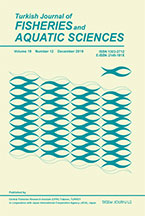Horticultural Studies (HortiS)
2019, Vol 36, Num, 1 (Pages: 79-87)
The effects of inter-row spacings on yield, yield components and oil ratio of winter canola (Brassica napus L.)
2 Harran University Agriculture Faculty Field Crops Department, Şanlıurfa DOI : 10.16882/derim.2019.532091 Viewed : 3388 - Downloaded : 1689 The aim of this research was to investigate the effect of different inter-row spacing on yield, yield components and oil ratio of canola. Experiments were established in the trial site of the Department of Field Crops, Faculty of Agriculture, Harran University in randomized complete block design with 3 replications in 2011-2012 and 2012-2013 growing seasons. Licord cultivar, which is known as winter type, was used in the experiment. In the experiment, the plots consisted of 5 rows with 6 m length, inter-row spaces were 10, 20, 30, 40, 50, 60 and 70 cm, and intra-row space was 5 cm. Seed yield (kg ha-1), plant height (cm), number of branches (plant-1), number of pods (plant-1), number of seeds (pod-1), 1000 seed weight (g), oil ratio (%), number of flowering days (day) and number of maturation days (day) were examined. In the results of the study; it was observed that in case of inter-row spaces of 60 and 70 cm, increased the seed yield decreased; the plant height decreased with the increases of the inter-row spacing; number of branches per plant, number of pods per plant, number of seeds per pod; and 1000 seed weight increased with the increases of the inter-row spacing. The effects of inter-row spacing on the oil ratio, number of flowering days and number of maturation days were limited in two years of the trial. Consequently, it can be recommended the most suitable inter-row spacing is 20 cm for canola cultivation. Keywords : Canola; Inter-row; Yield; Yield components; Oil ratio














